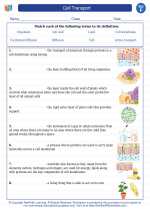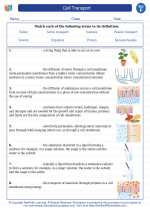Space
Space, also known as outer space, is the vast expanse that exists beyond Earth and its atmosphere. It is an almost perfect vacuum, with very low density and pressure. Space is not completely empty, it contains a low density of particles, predominantly hydrogen plasma, as well as electromagnetic radiation.
Key Concepts
- Universe: The universe is everything that exists, including all matter, energy, planets, stars, galaxies, and the contents of intergalactic space.
- Galaxies: A galaxy is a system of stars, stellar remnants, interstellar gas, dust, dark matter, and other astronomical objects bound together by gravity.
- Solar System: The solar system consists of the Sun and the collection of celestial objects, such as planets, moons, asteroids, and comets that are held in its gravitational pull.
- Planets: Planets are large celestial bodies that orbit stars and do not produce their own light. There are eight recognized planets in the solar system, including Earth.
- Stars: Stars are massive, luminous spheres of plasma held together by gravity. They produce their own light and heat through nuclear fusion reactions in their cores.
- Astronomical Units: Astronomical units are used to measure distances in space. One astronomical unit (AU) is the average distance between the Earth and the Sun, approximately 93 million miles (150 million kilometers).
- Space Exploration: Space exploration is the investigation of outer space using space technology, physical exploration, and astronomical observations.
Study Guide
Here are some key points to focus on while studying the topic of space:
- Describe the structure of the universe and the different celestial bodies it contains.
- Explain the formation and classification of galaxies.
- Identify and describe the planets in our solar system, including their unique characteristics and orbits.
- Discuss the properties and life cycle of stars, including the processes of nuclear fusion and stellar evolution.
- Understand the concept of astronomical units and their significance in measuring distances in space.
- Explore the history and significance of space exploration, including key milestones and current missions.
By mastering these concepts, you will develop a deeper understanding of the vast and fascinating realm of outer space.
[Space] Related Worksheets and Study Guides:
.◂Science Worksheets and Study Guides Sixth Grade. Cell Transport
Worksheet/Answer key Cell Transport
Cell Transport  Worksheet/Answer key
Worksheet/Answer key Cell Transport
Cell Transport  Vocabulary/Answer key
Vocabulary/Answer key Cell Transport
Cell Transport  Vocabulary/Answer key
Vocabulary/Answer key Cell Transport
Cell Transport 

 Worksheet/Answer key
Worksheet/Answer key
 Vocabulary/Answer key
Vocabulary/Answer key
 Vocabulary/Answer key
Vocabulary/Answer key

The resources above cover the following skills:
Reading Standards for Literacy in Science and Technical Subjects
Craft and Structure
Determine the meaning of symbols, key terms, and other domain-specific words and phrases as they are used in a specific scientific or technical context relevant to grades 6-8 texts and topics.